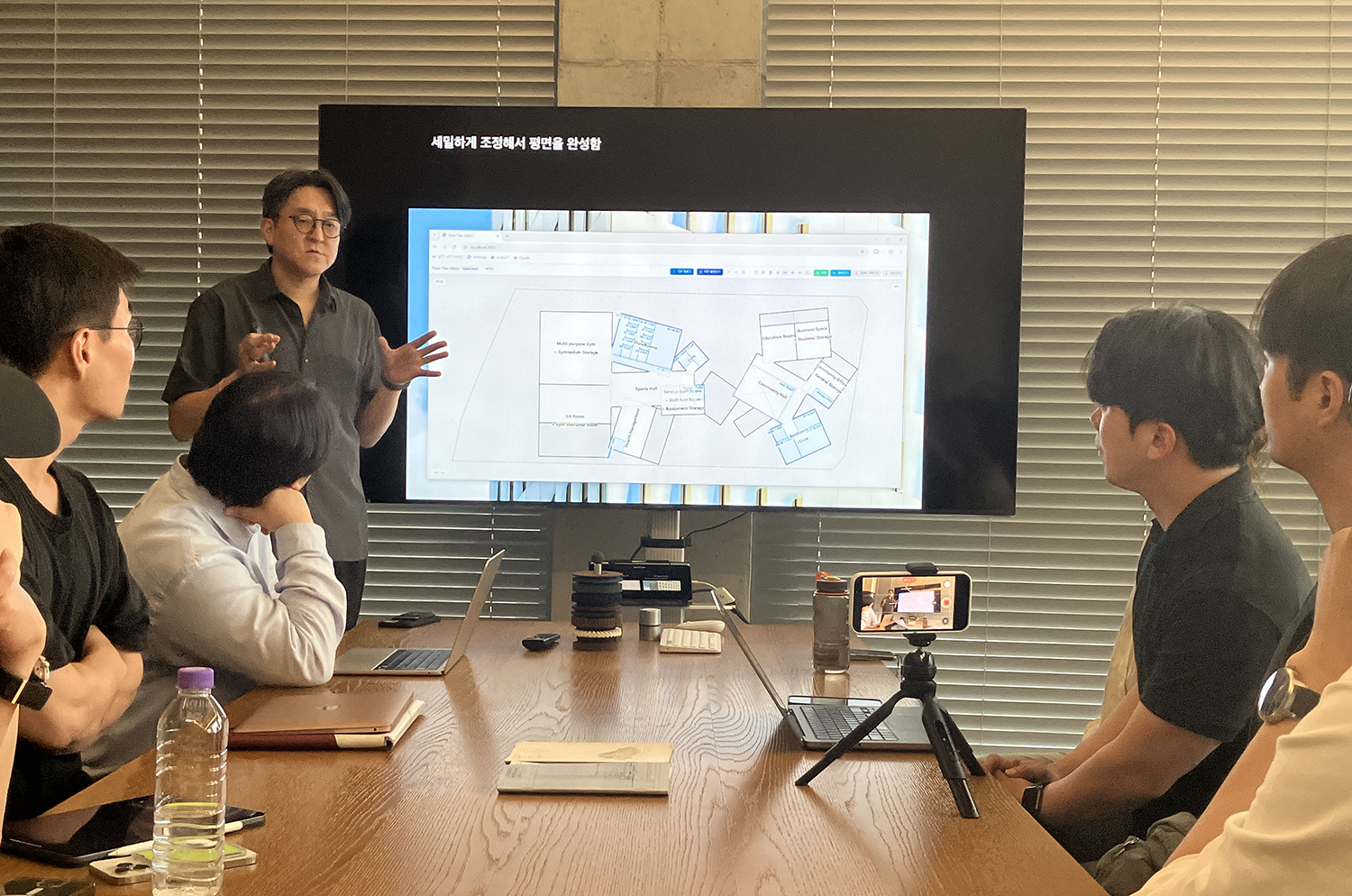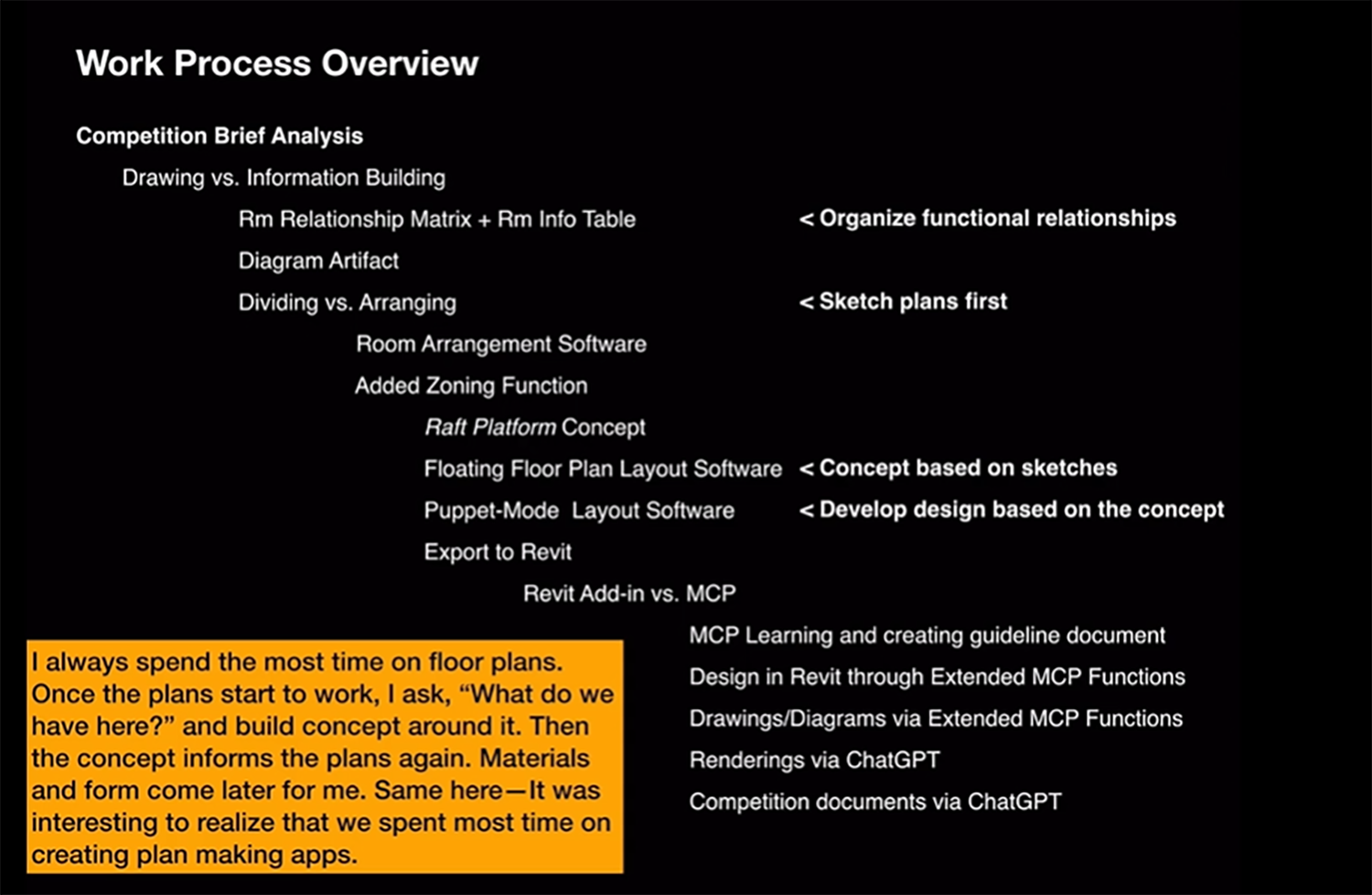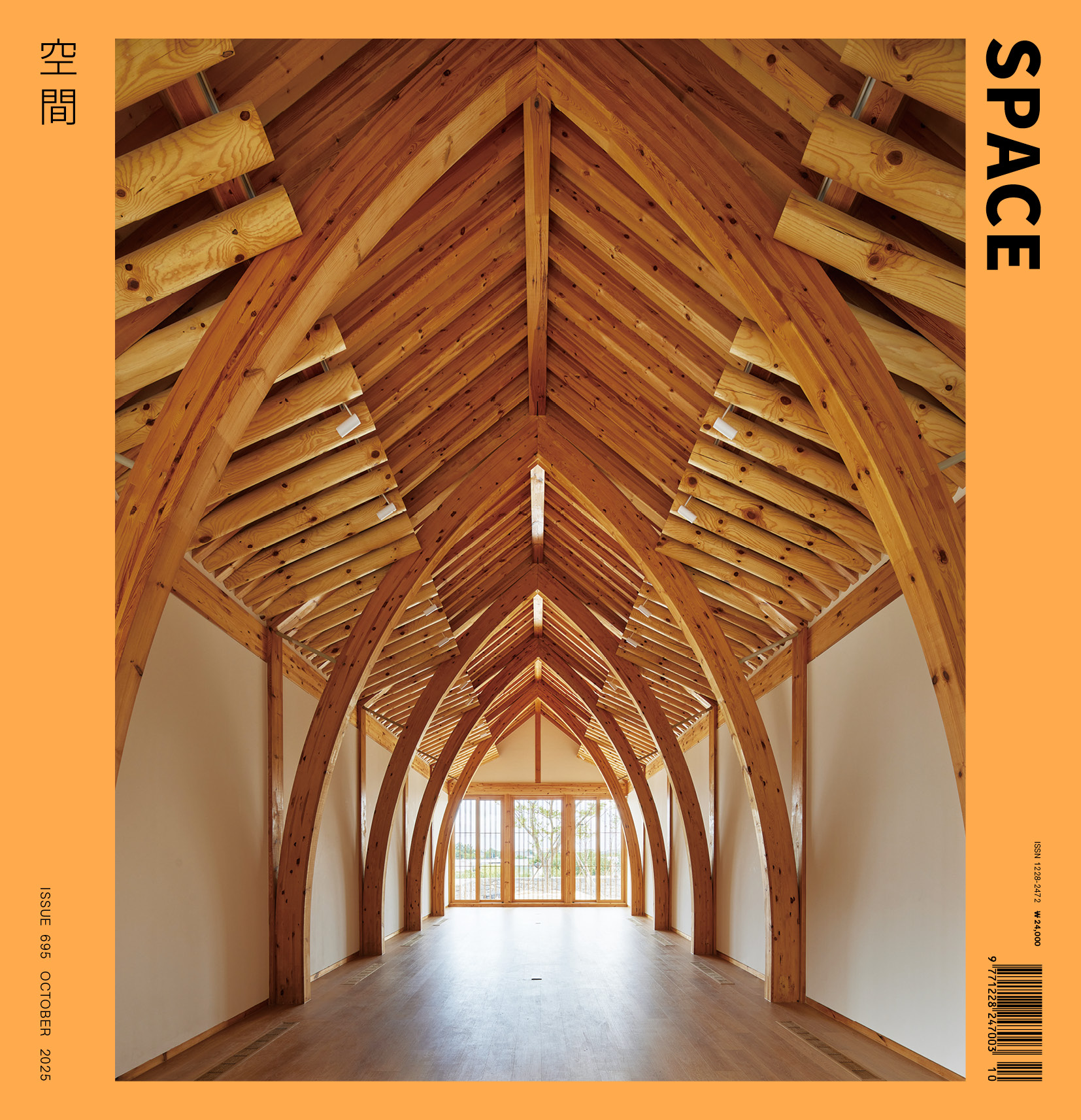SPACE October 2025 (No. 695)

Presentation of ‘Talk(-ing) Architect’. ©Lee Sowoon

Work process overview. Screenshot from Vimeo
On Aug. 29, Lifethings (principal, Yang Soo-in) held a workshop to share the outcomes of their a two-month-long experimental project exploring AI-assisted architectural design. The progressive experiment aimed to produce an AI-generated design proposal with accurate dimensions and practical information. For this investigation, they employed an LLM (Large Language Model). The presentation title, ‘Talk(-ing) Architect’, is suggestive of a shift in the design interface, from mouse-based input to natural language commands.
Yang Soo-in, who led the workshop, presented the entire design process through screen recordings that documented the workflow. From generating programme diagrams to developing floor plans and 3D modeling, and final presentation panels, all inputs were conducted solely through natural language prompts. The design process was carried out by running code generated by ChatGPT and Claude. In the initial stage, the AI was instructed to create a visual Artifact that clarified spatial relationships between rooms. To adjust spatial layouts based on the proposed design concept and site conditions, the AI built a physics engine-based interface. Based on this adjusted plan, the AI created a custom Revit addin that could automatically generate walls and roofs. The AI was also trained to control 3D modeling through the MCP (Model Context Protocol) and to generate a corresponding user manual. Using this framework, detailed 3D modeling was completed, followed by rendered perspectives of both exterior and interior views. Finally, presentation panels were assembled. In essence, the AI’s role throughout the design process was to generate ‘customised software’ at each stage of architectural development.
The key is speed and temporality. Given that architectural design inherently requires a high degree of freedom, it is practically impossible to create a universal codebase that accommodates all possible parameters. This reveals a fundamental limitation of computational design itself. From this perspective, the potential of LLM-driven computational design does not lie in enhancing the flexibility of the code, but rather in the ability to rapidly generate code tailored to specific situations and to modify or discard it as needed. This approach distinguishes it from the automated design solutions offered by recent proptech companies. While automation geared toward repetitive simulation and optimisation, LLM-based approaches fundamentally diverge by generating new software each time through contextual and spontaneous instructions.
In the following Q&A session, some concerns were raised regarding the expanding role and presence of AI. However, this project does not demonstrate how AI might replaces architects, but rather how architects can define and use AI as a design tool within the design process. At every stage, it remains architect’s responsibility to set direction and articulate their design intentions. AI merely acts as a temporary assistant that implements these ideas into tools. Yang Soo-in commented, ‘The fact that I spent most of the time generating custom software to assist in floor plan development reflects my own design style, which is heavily centered on floor plans.’ This suggests that AI is not realising the fantasy of ‘automation’ in architectural design but instead offering a new means of mediating the architect’s inherent preferences. Moving forward, the AI-generated software generated will likely not be fixed tools, but fluid structures, constantly created and dissolved in response to the linguistic and conceptual inputs.





